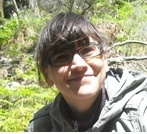Temporary grazing exclusion as a passive restoration strategy in a dryland woodland: Effects over time on tree regeneration and on the shrub community
- Articles in SCI Journals
- Jan, 2021
Köbel, M., Listopad, C.M.C.S., Príncipe, A., Nunes, A. & Branquinho, C. (2021) Temporary grazing exclusion as a passive restoration strategy in a dryland woodland: Effects over time on tree regeneration and on the shrub community.
Forest Ecology and Management,
483, 118732. DOI:10.1016/j.foreco.2020.118732 (IF2021 4,384; Q1 Forestry)
Summary:
Passive restoration is acknowledged as a cost-effective approach to restore forest ecosystems. In this approach, restoration implies simply ceasing the disturbance causing degradation. But an efficient allocation of restoration efforts requires an understanding of the recovery trajectories of different ecosystem components.
In Mediterranean oak open woodlands (called montado in Portugal), livestock grazing drives important plant community composition changes, and may hamper tree regeneration, threatening the long-term sustainability of this ecosystem. A temporary grazing exclusion may, thus, be an efficient restoration measure. However, how beneficial changes occur with time after exclusion on tree regeneration and on the structure and diversity of the ecosystem, are less clear.
In this work, we studied the effects of grazing exclusion as a passive restoration strategy on a cork oak woodland, focusing on cork oak tree (Quercus suber) regeneration and on the structure and diversity of the understory shrub community. We assessed oak seedlings and saplings abundance and height, shrub structure, compositional and functional diversity at sites with 0, 5, 9 and 13 years of grazing exclusion.
Cork oak individuals were similarly abundant throughout the chronosequence, but time had a positive effect on the height of saplings, until 9 years of exclusion. Shrub cover increased within 5 years after exclusion, and remained stable thereafter. Shrub taxonomic diversity increased continuously along the chronosequence, while functional diversity did not change consistently.
Our results suggest that grazing exclusion may be an effective passive restoration measure, although different components of the ecosystem have different timings of recovery. In the case of the studied cork oak woodlands, tree regeneration may be promoted by a 5–10 years period of exclusion, after which it decreases, while conservation of taxonomic shrub diversity may require at least 13 years of exclusion. Our results highlight the importance of optimizing restoration plans depending on the restoration objective.
https://www.sciencedirect.com/science/article/pii/S0378112720315012?viaihub!





